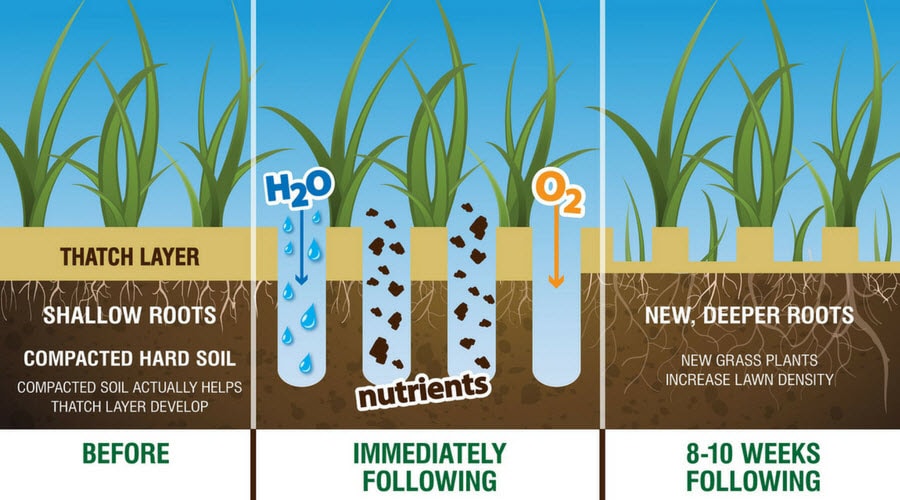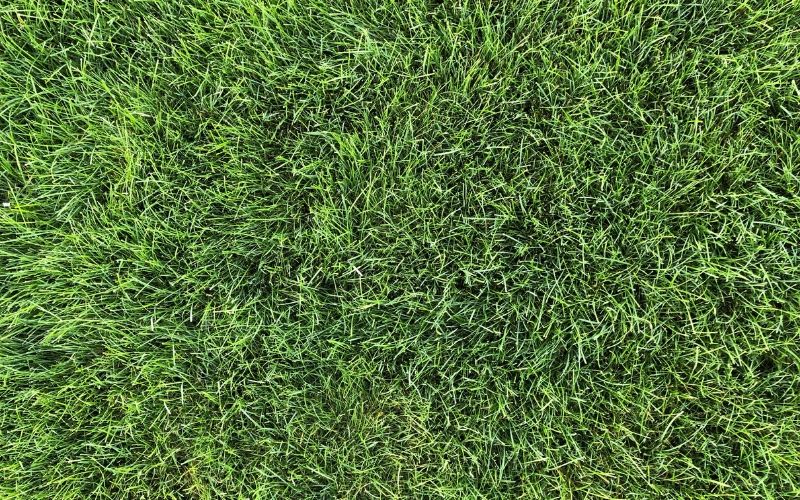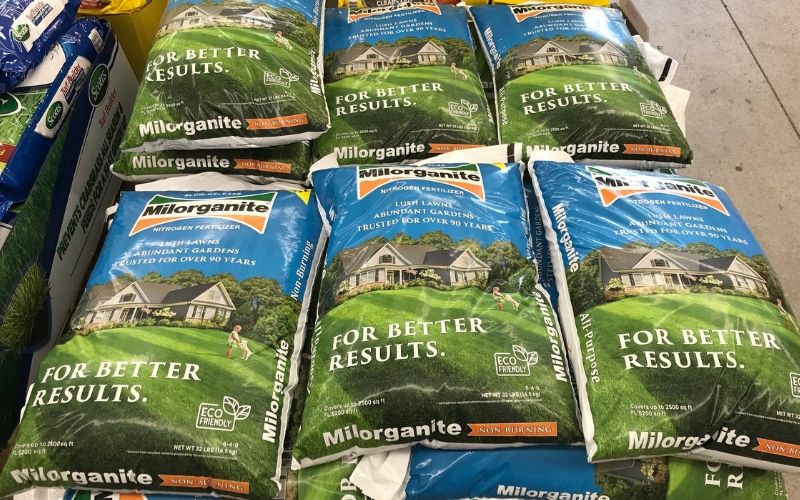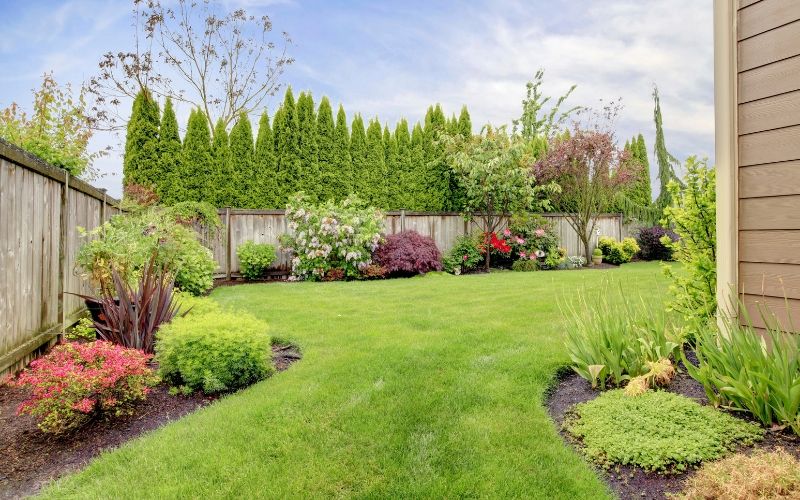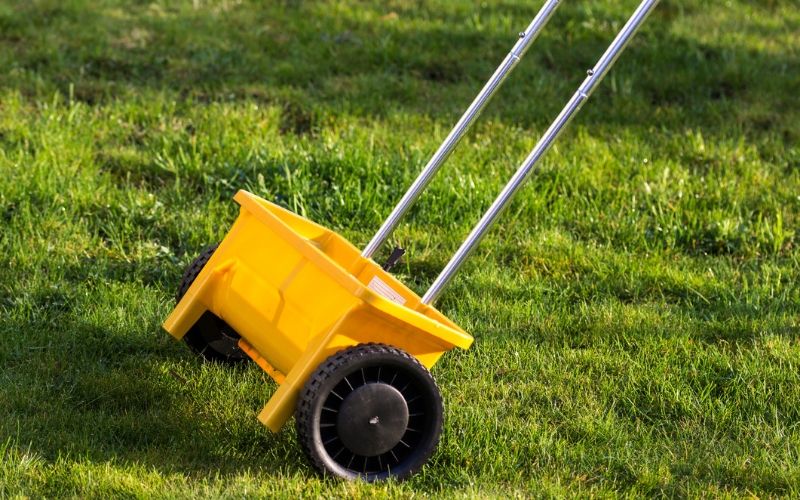Lawn Aeration
Your lawn breathes just like you do. It exchanges gases with the atmosphere as it grows. Lawn aeration is a maintenance practice that many homeowners overlook, but one that should be incorporated into every lawn care regime for a thicker, healthier lawn.
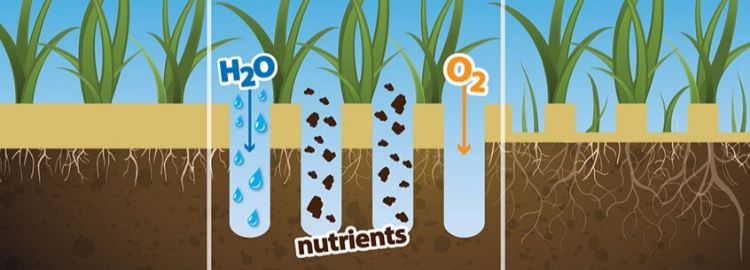
What is Aeration?
Aeration is the removal of a small core of soil or the punching of a thin hole into the soil. There are two kinds of tips, or "tines", that can be used on an aerator tool: hollow and solid. Of the two types, hollow tine aeration removes a solid plug of soil from the ground. This is most effective at improving airflow. In contrast, solid tine aeration punches a hole in the soil, removing thatch in the process.
A thatch layer greater than ½ inch thick can prevent roots from getting the right amounts of air, light, and water. While the solid tines are effective in removing thatch, the tine can compact the soil. For this reason, the hollow tine method is generally preferred.
What is Thatch?
Thatch is a layer of living and dead stems, roots, and crowns that develop between the green vegetation and the soil surface. A thatch layer greater than one inch acts as a barrier to water, nutrients, and air reaching the soil and should be removed to ensure a healthy lawn. Learn how to reinvigorate a lawn by removing the thatch.
Learn five steps on how to dethatch your lawn.
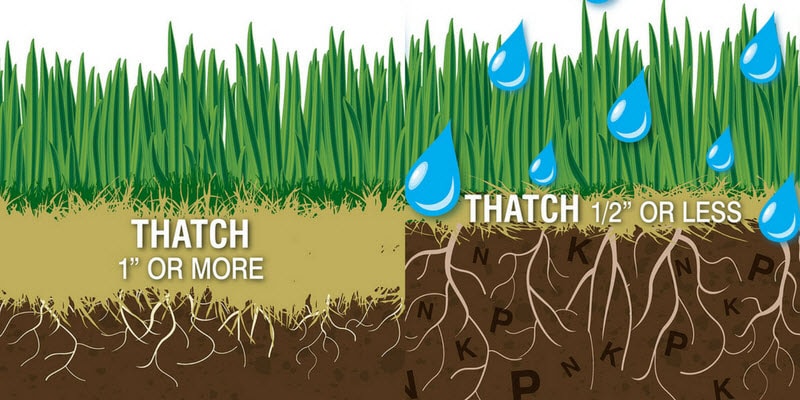
When to Aerate Your Lawn
If your lawn looks thin or weak in high-traffic areas or the thatch layer is greater than one inch above the soil surface, it’s time to aerate. If your lawn is in good condition aerate every other year when your grass is actively growing.
Northern grasses should aerate in early fall; aerating in the spring can damage new grass shoots. Southern grasses should aerate between mid-spring and early summer, and avoid aerating in the fall when the grass is dormant.
How to Aerate Your Lawn
Manual and power aerator equipment can be purchased or rented from most lawn and garden centers. Ask a few neighbors to share the rental cost and ensure you have a truck and a few friends when picking up the equipment. And always read the operator's manual carefully prior to use.
Aeration holes can be spaced 2-6 inches apart, and go anywhere from 1-6 inches deep. Remember, to flag sprinkler heads to avoid damaging irrigation set-ups.
Don't feel up to the task? Call your local landscape company or garden center.
After Aeration Overseed and Fertilize
Immediately after aeration, your lawn is ripe for overseeding and fertilizing. The holes provide excellent soil exposure for seeds and deliver fertilizer directly to the roots of your grass. For best results, use high-quality seed and fertilize with Milorganite®.
Mixing grass seed with Milorganite is an effective way to spread seed accurately. Mix 4 parts Milorganite with 1 part seed by weight. If you choose to mix Milorganite and seed, be careful to decrease future applications of Milorganite to prevent over-fertilization.
Why Aerate?
Aeration provides a number of benefits that lead to a healthier lawn:
- Alleviates soil compaction
- Improves drainage
- Encourages deep root growth
- Reduces weeds
- Increases fertilizer uptake
- Prevents thatch build up
